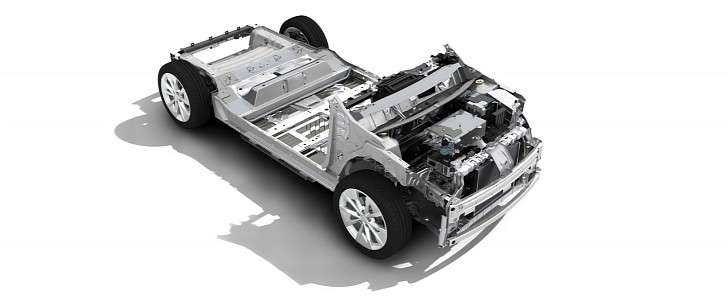After Renault made a deal with Geely to produce CMA products in its South Korean plant, that showed the French company does not want to rely on the Alliance anymore. Despite that, the three automakers that form it will still try to make the most of the agreement. Reuters discovered they’ll launch 30 new EVs over 5 platforms until 2030.
We were aware of three of these platforms: the CMF-EV (for C-segment and D-segment cars), CMF B-EV (for B-segment products), and one for kei cars, which Nissan and Mitsubishi are already sharing in Japan. According to Reuters, there will be two dedicated electric platforms for kei cars, which are very relevant in the home market of Nissan and Mitsubishi.
The other platform would be the one Renault already uses to produce the Renault K-ZE and the Dacia Spring in China. Based on the CMF-A, it will probably be called CMF A-EV. We have no idea which other vehicles it could spawn, but the Indian market may give us some tips with the Triber and the Kiger, respectively, a small MPV and a crossover.
To have these 30 new EVs, the three companies will promise to invest €20 billion ($22.61 billion at the current exchange rate) until 2027 on developing these electric cars. This investment will add to the €10 billion ($11.3 billion) the three carmakers have already spent in their electrification efforts.
After Nissan announced it would have a solid-state battery, you may be wondering if the company was willing to share this technology with its alliance partners. According to Reuters, the answer is “yes.” After all, producing them on a larger scale than Nissan would be able to use itself will help to cut costs. On top of that, Dongfeng is a Nissan partner in China. After the Chinese carmaker announced a fleet of 50 cars with solid-state cells, that may also have repercussions for the Alliance.
In the end, that’s the goal of the joint investment. The two sources Reuters spoke to said that the three automakers would share cells and other vital components. They expect to halve battery pack costs. Considering these are the most expensive components in any electric vehicle, the alliance would already pay off based solely on this. The official announcement should happen this week.
The other platform would be the one Renault already uses to produce the Renault K-ZE and the Dacia Spring in China. Based on the CMF-A, it will probably be called CMF A-EV. We have no idea which other vehicles it could spawn, but the Indian market may give us some tips with the Triber and the Kiger, respectively, a small MPV and a crossover.
To have these 30 new EVs, the three companies will promise to invest €20 billion ($22.61 billion at the current exchange rate) until 2027 on developing these electric cars. This investment will add to the €10 billion ($11.3 billion) the three carmakers have already spent in their electrification efforts.
After Nissan announced it would have a solid-state battery, you may be wondering if the company was willing to share this technology with its alliance partners. According to Reuters, the answer is “yes.” After all, producing them on a larger scale than Nissan would be able to use itself will help to cut costs. On top of that, Dongfeng is a Nissan partner in China. After the Chinese carmaker announced a fleet of 50 cars with solid-state cells, that may also have repercussions for the Alliance.
In the end, that’s the goal of the joint investment. The two sources Reuters spoke to said that the three automakers would share cells and other vital components. They expect to halve battery pack costs. Considering these are the most expensive components in any electric vehicle, the alliance would already pay off based solely on this. The official announcement should happen this week.
















